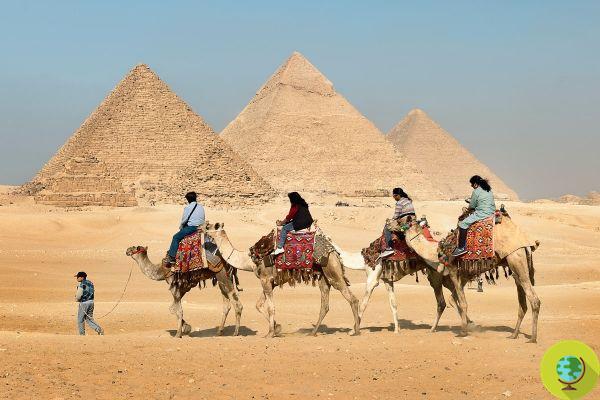
Stop to horseback riding and on the back of camels both in the suggestive pyramids of Giza and in the Egyptian archaeological areas
Stop to horseback riding and on the back of camels both in the suggestive pyramids of Giza and in the Egyptian archaeological areas. After many years of battles, PETA Asia achieves a great victory, together with over 500 thousand people who contacted the Egyptian Ministry of Tourism to ask for a ban on the exploitation of animals.
Horses and camels are not means of transport. There are plenty of photos of tourists on their backs taking a tour of the most beautiful sites in the world. But at least in Giza we won't see any more. After the media pressure, something moved and the ministry itself banned walking with animals. Tourists will be able to use electric cars and buses if they don't really want to walk. All of this represents a great victory. Camels and horses, as well as donkeys in other parts of the world, are forced to spend days in the sun and make grueling rides without access to food, water and shade for many hours.
They are dressed up as if they were knick-knacks and whipped if they show fatigue. PETA's undercover investigation into the country revealed the immense suffering of these pack animals, showing them exhausted and often nearly dead on the ground. Workers were caught on camera as he mercilessly whipped a horse after it collapsed from exhaustion.
** ATTENTION THIS VIDEO CONTAINS IMAGES THAT COULD IMPACT YOUR SENSITIVITY **
Many of the camels used for walking in Egypt come from the infamous Birqash camel market in Cairo, where the animal rights organization filmed the beaten-up camels. Skeletal animals, with protruding ribs and hips, whose wounds, hidden by saddles and bridles, become infected and give rise to pressure sores.
After those dramatic images, a case was also raised before the Society for the Protection of Animal Rights in Egypt (SPARE) against the camel sellers at the market, the local council, the Ministry of Environment, Agriculture and the Government of Giza. . Now finally, the abuse of animals will have no place in the beautiful tourist destinations of Egypt, but the road is still uphill, because in so many other sites this practice still exists.
“Riding on horses, donkeys, mules, camels or other animals is cruel. No animal deserves to be dragged around and forced to bear the weight of humans, carriages and tourists' luggage ”, concludes PETA.
Recall that also in Santorini a similar proposal was made to prohibit the exploitation of donkeys as taxis: animals forced to climb 520 steep steps carrying an enormous weight, that of tourists who do not want to walk the path that, on the Greek island of Santorini, runs from the port to the town of Fira.
Santorini, towards a ban on the exploitation of donkeys used as taxis?
Source: PETA ASIA/Enterprise
Read also:
- After the camels, 40.000 wild horses will also be killed in Australia to protect ecosystems
- Slaughter of camels in Australia: 1500 already killed, but the Somali people ask to stop the slaughter and take them to Africa
- Beaten and bloodily wounded camels and horses: what lies behind a sightseeing tour in the Pyramids


























